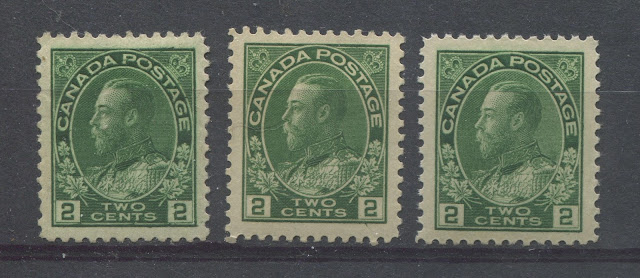Shades Of The 3c Carmine Admiral Stamp 1923-1928

Overview This stamp is perhaps the simplest of the Admiral issues in terms of shades, with Unitrade listing only two shades of the sheet stamps: carmine and rose-carmine, and just carmine for the coil stamps. However, in reality, there are quite a large number of extremely subtle shades, none of which, in my opinion are carmine, as we shall see. The closest this stamp comes to carmine in my opinion is a carmine-red shade. These subtle shades may be difficult to differentiate in the scans, but I think if you look at the scans long enough, you will begin to see the differences. I do not, at the moment, have an example of Unitrade's rose-carmine shade, but will add an example when one becomes available. I will start with the sheet stamps, then will show the 1926 surcharges, the imperforates, and then will conclude with the coils. I will show you the different shades and then cross reference them to the Stanley Gibbons Colour Key. The Sheet Stamp Carmine Shades The abo...




